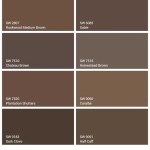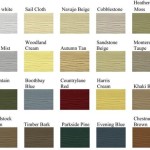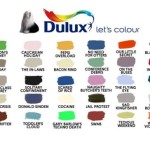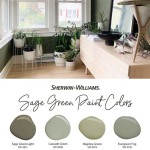What Color To Paint My Wooden Fence: A Comprehensive Guide
Selecting the appropriate color for a wooden fence involves careful consideration of numerous factors. The color can drastically influence the aesthetic appeal of a property, impact the lifespan of the fence, and even affect the surrounding environment. This article aims to provide a comprehensive guide to navigating the complexities of fence color selection, outlining key considerations and popular options to assist in making an informed decision.
Understanding the Impact of Color on a Wooden Fence
The choice of color for a wooden fence is not merely an aesthetic one; it directly affects the wood's performance and longevity. Darker colors, for instance, absorb more solar radiation, leading to increased heat buildup. This can accelerate the expansion and contraction of the wood, potentially causing warping, cracking, and premature deterioration. Conversely, lighter colors reflect sunlight, keeping the wood cooler and reducing the risk of these issues. However, lighter colors may show dirt and stains more readily, requiring more frequent cleaning and maintenance.
Furthermore, the color can influence the perception of space. Light colors tend to make an area feel larger and brighter, while darker colors can create a more enclosed and intimate atmosphere. This is particularly relevant when considering the size of the yard and the overall design of the outdoor space. A small yard with a dark-colored fence might feel cramped, while a large yard with a light-colored fence could appear even more expansive.
The geographical location and climate also play a significant role. In areas with high UV exposure, light-reflecting colors are generally recommended to minimize sun damage. In regions with frequent rainfall, colors that resist moisture absorption are preferable to prevent rot and decay. The color should also complement the surrounding landscape and architectural style of the house. A modern home might benefit from a contemporary gray or white fence, while a traditional home could be enhanced by a classic brown or natural wood stain.
Factors to Consider When Choosing a Fence Color
Several key factors should be assessed before deciding on a specific fence color. These factors encompass the existing aesthetics of the property, the practical needs of the homeowner, and the long-term maintenance requirements of the fence.
Architectural Style and Landscape Harmony: Consider the architectural style of the house and the surrounding landscape. The fence color should complement these elements, creating a cohesive and visually appealing outdoor space. A contemporary-style home might benefit from a modern color palette, such as gray, charcoal, or even a minimalist white. Traditional homes often look best with classic wood tones, such as cedar, redwood, or a stained brown finish. The color should blend with the existing landscaping, including the colors of the plants, flowers, and other outdoor features. A vibrant garden might be enhanced by a neutral-colored fence, while a more subdued landscape could benefit from a bolder color choice.
Privacy and Security Needs: The color of the fence can also influence its perceived height and level of privacy. Darker colors tend to recede into the background, making the fence seem less imposing. This can be advantageous if the goal is to provide privacy without creating a visually overwhelming barrier. Lighter colors, on the other hand, tend to stand out and can make the fence appear taller and more prominent. This can be useful for security purposes, as a highly visible fence can deter intruders.
Maintenance Requirements and Longevity: The chosen color will impact the frequency and intensity of maintenance required. Lighter colors tend to show dirt and stains more readily, necessitating more frequent cleaning. Darker colors, while concealing dirt better, can fade more quickly in direct sunlight, requiring more frequent repainting or staining. Consider the available time and resources for fence maintenance when making a color decision. Opt for colors that are durable and resistant to fading, chipping, and peeling. Use high-quality paints or stains that are specifically designed for outdoor use and that offer UV protection.
Neighborhood Aesthetics and Regulations: It is essential to consider the aesthetic norms of the neighborhood and any applicable homeowner association (HOA) regulations. Some neighborhoods have specific guidelines regarding fence colors and styles. Before making a final decision, check with the HOA or local authorities to ensure compliance with all applicable rules and restrictions. Choosing a color that clashes with the surrounding properties can detract from the overall appearance of the neighborhood and potentially lead to disputes with neighbors.
Popular Color Options for Wooden Fences
The range of available colors for wooden fences is extensive, offering homeowners a wide variety of options to suit their individual tastes and preferences. Some of the most popular and versatile choices include natural wood tones, white, gray, and various shades of brown and other earthy colors.
Natural Wood Tones: These colors highlight the natural beauty of the wood, showcasing its grain and texture. Options include cedar, redwood, and pine, each with its own unique hue and character. Natural wood tones offer a timeless and classic look that complements a wide range of architectural styles. To maintain the natural color of the wood, it is essential to apply a clear sealant or stain that protects against UV damage and moisture. Periodic reapplication of the sealant or stain is necessary to prevent the wood from weathering and graying over time.
White: White is a versatile and popular choice for wooden fences, offering a clean and crisp look that can brighten up any outdoor space. White fences are particularly well-suited for traditional-style homes and cottage gardens. They also create a sense of spaciousness and can make a small yard feel larger. However, white fences require more frequent cleaning to remove dirt and stains. Choose a high-quality exterior paint that is resistant to mildew and fading. Regular washing with soap and water will help to keep the fence looking its best.
Gray: Gray has become increasingly popular in recent years, offering a modern and sophisticated look that complements contemporary-style homes. Gray fences can blend seamlessly with the surrounding landscape and create a calming and serene atmosphere. They are also relatively low-maintenance, as gray tends to conceal dirt and stains better than white. A variety of shades of gray are available, from light and airy to dark and dramatic. Consider the architectural style of the house and the overall design of the outdoor space when selecting a specific shade of gray.
Brown and Earthy Tones: Brown and earthy tones provide a warm and inviting look that blends well with natural landscapes. These colors are a classic choice for wooden fences and complement a variety of architectural styles. Options include shades of brown, beige, tan, and terracotta. Brown fences are particularly well-suited for homes with traditional or rustic designs. They also provide a good level of privacy and can create a sense of enclosure. Like natural wood tones, brown and earthy tones can be enhanced with a stain that protects the wood from UV damage and moisture.
Other Color Considerations:Beyond the aforementioned standard choices, exploration into greens, blues, and even blacks brings unique dimensions to fence color selection. Light greens and blues promote a relaxing, nature-integrated aesthetic suitable for gardens and properties aiming for a tranquil feel. Black, while a bold choice, can provide a modern, sophisticated look, particularly when contrasted with lighter landscaping elements. When considering these less conventional choices, assessing compatibility with the surrounding environment and architectural design is paramount.
Ultimately, the best color for a wooden fence is the one that best meets the homeowner's individual needs and preferences, while also considering the practical factors outlined above. Taking the time to carefully evaluate these factors will ensure a fence that is both aesthetically pleasing and durable for years to come.
Application techniques can significantly impact the final color result and longevity. Using a sprayer versus a brush will lead to different levels of saturation and texture. Proper surface preparation, including cleaning and sanding, is crucial for paint or stain adhesion and prevents peeling or uneven color distribution. Multiple thin coats are generally preferable to a single thick coat, allowing for better curing and a more uniform finish. The method of application and quality of paint are as critical as the color choice itself.

Fence Painting Ideas That Will Make The Difference

Fence Paint Color Ideas To Boost Curb Appeal Wow 1 Day Painting

Best Fence Colours For Small Garden The Paint Guide

What Is The Best Fence Paint Colour Shed

Top 10 Wonderful Timber Fence Colors For 2025 Pentagon

22 Wood Fence Stain Colors How To Choose The Right One

Fence Paint Color Ideas To Boost Curb Appeal Wow 1 Day Painting

Fence Painting Ideas That Will Make The Difference

Best Fence Colours For Small Garden The Paint Guide

Do S And Don Ts For Choosing The Right Fence Colour Maria Killam
Related Posts








